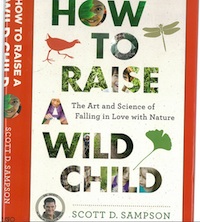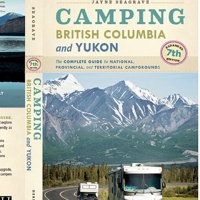A parent’s guide to raising kids with nature
How to Raise a Wild Child by Scott D. Sampson will inspire you to take your kids out for a nature walk.
“Children can now recognize greater than a thousand corporate logos, but fewer than ten plants native to their region.”
I stopped short when I read that quote on page five of the book How to Raise a Wild Child: The Art and Science of Falling in Love with Nature by B.C. author Scott D. Sampson. I don’t think that my children probably suffer from this syndrome as much as many children raised in the city, as we live on three wooded acres and are outside almost every day. But I do have a struggle I share with many parents: limiting screen time and helping my children learn about and appreciate nature.
Sampson’s book opens the eyes of parents to the importance of getting our children outside and using their imaginations. But more than simply telling us what we probably already knew—our children should interact with nature so they will learn to love it, understand it and want to look after it when they are adults— the book teaches parents how to get our children to be enthusiastic about nature.
Sampson encourages mentorship, and gives practical suggestions on how to carry this out. I followed some of his ideas as I took my 11-year-old daughter and six-year-old son out for a nature walk. We looked for edible and medicinal plants, we checked out the bugs skittering across our pond, and stopped to listen to try to determine how many different birds we could hear.

I expected this to be a short exercise, but it turned into an all-afternoon excursion. We came home muddy, wet and very excited about everything we had seen and heard. Since the walk I have been more conscious of paying attention to the sights and sounds of nature whenever I am outside.
Sampson argues that children who learn about nature firsthand by interacting with it will see animals as individuals with their own wills and inclinations. He saw this happen with his own daughter Jade.
“This exquisite predatory bird prompted Jade to wonder how it must feel to fly, and she sometimes worried about Reddy (her hawk) finding his next rodent meal. Yet their science classes at school tend to portray these creatures more as objects: Buteo jamaicensis, a large avian raptor of broad geographic distribution with rounded wings and a pronounced, broad tail.”
If you have ever wanted to get your child more involved with nature, How to Raise a Wild Child will give you all the incentive and help you will need. An added bonus is that you will see nature differently after reading this book and you will want to get out and learn more as well.
To get your own copy go to Amazon.ca








